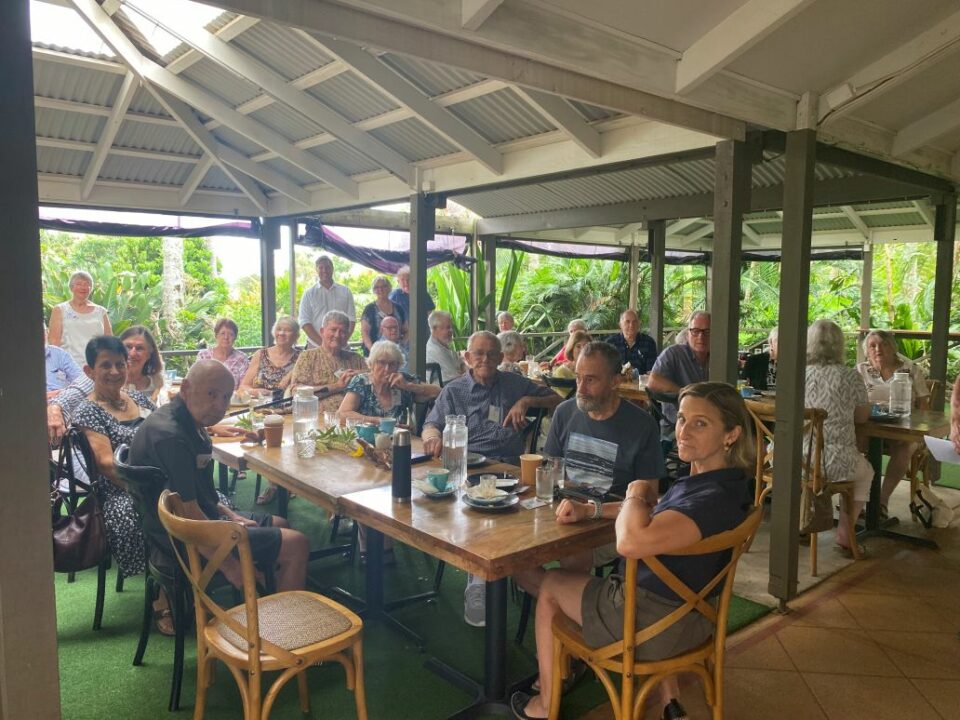Deep Brain Stimulation surgery was life-changing for my husband

Balance Impairment Leading to Falls in Parkinson’s
7th November 2024“Everything we do is about helping to improve the quality of life for a person with Parkinson’s.”
7th November 2024Deep Brain Stimulation surgery was life-changing for my husband
Deep Brain Stimulation surgery was life-changing for my husband
DBS helped Eric find relief from his most debilitating Parkinson’s symptoms
By Jill Hammergren
I’ve often heard people scoff “It’s not rocket science” or “It’s not brain surgery” when expecting someone to accomplish an easy task.
But as I tried to calm my jangling nerves, an important clarification ran through my mind: “This is brain surgery.”
I was alone with my thoughts in the hospital waiting room after my husband, Eric, had been taken back for Deep Brain Stimulation (DBS) surgery. He’d been prepped by his neurologist, neurosurgeon, surgical team, and a representative from Boston Scientific – a medical device manufacturing company.
I’d sent him off with a quick kiss, and then he was wheeled into the operating room for the first of two DBS surgeries to treat his advancing Parkinson’s symptoms.
That was two years ago, but I remember it like it was yesterday.
A neurologist diagnosed Eric with Parkinson’s in 2014. Over the next eight years, the disease progressed, but Eric’s symptoms were never tremor-dominant like so many other people with Parkinson’s.
His version of the disease manifested as extreme joint stiffness, muscle rigidity bradykinesia (slow movements), and dystonia – which presented as a constant, painful writhing and cramping of Eric’s feet that made his toes curl and twist. He also complained that the pressure on his shoulders felt like an anvil pressing down on him.
Reduced to crawling
Medications helped with various symptoms, but his off times had become horrendous – especially the crawling.
Tears quickly fill my eyes when I recall those horrific images permanently seared in my memory. When Eric couldn’t get his dopamine-depleted brain to move his body, he dropped to all fours and crawled.
Seeing the hopeful strides of babies exploring independently on their hands and knees may be awe-inspiring. When a man in his 60s is forced to crawl by the stranglehold of a neurodegenerative disease, it’s demoralising and dehumanising.
As the woman who loves him, experiencing these excruciating moments left me devastated and helpless.
Eric’s neurologist was confident that bilateral DBS would improve Eric’s long-term quality of life with Parkinson’s. We were more than ready to try it.
Preparing for and undergoing DBS surgery was a process. Psychologists gave Eric several cognitive tests to determine his tolerance for surgery.
First step
During an office visit a week before the first operation, the neurosurgeon drilled four anchors into Eric’s skull and then sent him for an MRI. This would help the team map the size and shape of Eric’s brain and the anchor locations so a halo brace could be customized and anchored for surgery.
Imagine something similar to a round locking anchor on ready-to-assemble furniture. The anchors didn’t protrude like the bolts on Frankenstein’s monster, but they were visible in Eric’s head for a week.
Eric had to stop taking his Parkinson’s medications 24 hours before the first surgery. He was miserable and couldn’t function well.
I struggled to get him out of the house and into the car for our predawn ride to the hospital. Our emotions were raw and strained.
In total, Eric went 36 hours without his meds. We then struggled to have them administered on a rigid schedule in the hospital. As a caregiver, I had to relentlessly advocate for Eric’s needs.
Eric and his neurologist selected a DBS system with two flexible wire leads that enabled the doctor to target very specific areas within Eric’s brain near the substantia nigra – a part of the brain that produces dopamine and helps to control body movements. The system’s stimulator has a 15-year rechargeable battery.
Awake for surgery
Here’s a remarkable note: The surgical team kept Eric awake during the four-hour surgery so he could help them determine which placement would be most effective in alleviating some of his Parkinson’s symptoms.
I thought I was prepared to see the big, curved incisions across the top and side of Eric’s bald head, but it was still shocking. However, his smile was wonderful.
During the second surgery a week later, the neurosurgeon tucked the wire leads behind Eric’s right ear and down through his neck, and then hooked them to the neurostimulator he implanted in Eric’s upper right chest, just below his shoulder. The stimulator is akin to a pacemaker, but this device keeps Eric’s brain stimulated night and day.
A month later, the neurologist used a portable tablet to access and program Eric’s DBS system, and it can now be adjusted as needed. Eric uses a remote to change the settings, and he charges the device weekly by sitting with a sleeve that holds the charger atop the stimulator in his chest.
DBS has been a life-changing experience for us. It alleviated some of Eric’s most bothersome Parkinson’s symptoms and enabled him to eliminate three medications. Eric still struggles with the roller coaster of off times and some gait freezing, but we are thankful for advancements in technology and ongoing Parkinson’s research.
Source: US Parkinson’s News Today



